Support Village Voice News With a Donation of Your Choice.
…ICU nurse complains about faulty monitors, lack of ventilators
—says hospital understaffed, nurses underpaid
“Right now we need ventilators and monitors because currently, we would have to share monitors with patients, and there are even monitors which we cannot depend on for readings because they are malfunctioning, and so this means our patients cannot be monitored around the clock. We try to be smart about it by putting the more stable patients that are not so dependent on monitoring with these faulty devices but at the end of the day, a patient’s condition can change drastically, and suddenly” the Nurse said, while underscoring the need for additional equipment within the Infectious Diseases Hospital.
By Svetlana Marshall

All is not well at the Infectious Diseases Hospital, a Registered Nurse (RN) attached to the Intensive Care Unit (ICU) said, as she complained bitterly about being underpaid and the lack of human resources, monitors and ventilators at a time when the country needs to intensify its fight against the Coronavirus Disease (COVID-19), which have claimed the lives of more than 792 Guyanese locally.
In an interview with Village Voice News, the Registered Nurse (RN), who asked to remain anonymous out of fear of victimization, confirmed reports that there is an insufficient number of ventilators in the COVID-19 ICU at the Infectious Diseases Hospital. According to Yale Medicine, “a ventilator pumps air—usually with extra oxygen—into patients’ airways when they are unable to breathe adequately on their own.” According to the RN, it is recommended that in a COVID-19 ICU, each bed be equipped with a ventilator.
At the Infectious Diseases Hospital, the ICU was built to accommodate approximately 28 patients, however, the RN said it has long surpassed its capacity. Due to the high number of patients requiring intensive care, another section of the hospital was identified to accommodate those patients but the RN said they are without ventilators.
“So if these patients’ conditions worsen suddenly, we would have to move them. But how can we move them if everyone inside of the 28-bed unit is on ventilators,” she asked.
In such cases, the Biomedical Department would be called in to assist with mobile ventilators.
“Only recently there was a situation like that. We didn’t have enough ventilator and the patient’s condition worsened, which required them to utilise a ventilator, and we had to make those calls and get the biomedical technicians out so that they can set up a new vent for us,” the Registered Nurse told this newspaper.
In addition to ventilators, she said there is a need for proper functioning monitors.
“Right now we need ventilators and monitors because currently, we would have to share monitors with patients, and there are even monitors which we cannot depend on for readings because they are malfunctioning, and so this means our patients cannot be monitored around the clock. We try to be smart about it by putting the more stable patients that are not so dependent on monitoring with these faulty devices but at the end of the day, a patient’s condition can change drastically, and suddenly” the Nurse said, while underscoring the need for additional equipment within the Infectious Diseases Hospital.
Oxygen to patient cut off
That aside, the RN said there was also a case in which the oxygen supply to the ICU cut due to the lack of bulk oxygen. “The cylinders that provide the oxygen to the unit would deplete quickly depending on how many patients we have, so the biomedical technicians would have to check there frequently, and switch over the oxygen to a new tank.
Inside the Infectious Disease Hospital during the early days of its equipping
And in that process, the healthcare workers in the ICU would have the time of their lives because we would have patients who are highly dependent on oxygen and that switching over process, drastically decreases the amount of oxygen available to these patients. So when that decrease happens in the oxygen that is available to them, it shows physically, the patients go into distress, and we now have to try our best to maintain them until the oxygen levels come back up and they can be put back on the ventilators or the face masks. So we would have to, sometimes, administer CPR to multiple patients simultaneously,” the RN said as she explained the situation on the ground.
Big challenge working in the ICU
The Registered Nurse said working in the COVID-19 ICU is challenging, and the lack of equipment places greater burden on nurses. Noting that they are doing the best they could, the nurse said the increase in deaths is also taking a toll on them. “It is really affecting the nurses mentally because you would find sometimes on one shift you would have to wrap four-to-five bodies and to know that you would have done all that you can to help this person to recover, and the bottom line was, it wasn’t enough,” she told this newspaper.
Just days ago, the Government secured a US$1,029,000 grant from the Government of Japan to secure equipment to enhance its fight against the COVID-19. The Ministry of Health in early September also signaled its intention to expand the hospital.
STAFFING
In one of his most recent COVID-19 Updates, Minister of Health, Dr. Frank Anthony said there is adequate staff at the Infectious Diseases Hospital at Liliendaal. According to the Health Minister, there are currently 101 nurses working at the hospital along with some 57 doctors. “We also have a number of ancillary staff that include physiotherapists, pharmacists, therapists, biomedical technicians, laboratory people and so forth. So there is an adequate complement of staff…,” Minister Anthony said while noting that due to the special nature of the facility, the hours in each shift have increased.
But the Registered Nurse, who worked at the Georgetown Public Hospital (GPHC) at the start of pandemic before being transferred to Infectious Diseases Hospital, is adamant that there is a shortage of nurses at the facility. She explained that of the total number of nurses at the health institution, approximately 41 have been assigned to the Intensive Care Unit (ICU), which usually has more than 30 patients per day. “I know that 40-to-41 may sound like a lot but these numbers would have to be split up into twos – day nurses and night nurses – and further the nurses have to be divided per day. So three-to-four days per week, a nurse will work in the ICU, this is without overtime,” the RN explained.
According to her, as a result to the shift system and the need for days off, there are usually seven-to-eight nurses working per shift. “It breaks down to roughly seven to eight persons per shift if we try hard, and it has reached a point where the nurses are exhausted, they are becoming ill,” the nurse told this newspaper, while emphasising that the situation is “overwhelming.”
According to the RN, the shortage of nurses was among factors that influenced the decision to extend the shifts. “Initially, we would work four-hour shift, and just to make up the adequate staffing for the shifts, some persons would spend in excess of 24 hours at work. Going in, coming out to rest, going back in, that was just it,” she explained.
The shifts subsequently increased from four hours to six hours, and later to 12 hours.
“We moved from a four-hour shift to a six-hour shift, and persons were working two 6-hour-shifts in 24 hours or three 6-hour-shifts in 24 hours, taking breaks in between. So that is how the shift system would have changed eventually to a 12-hour shift,” she explained. She said even after completing a 12-hour shift, nurses, at times, would have to remain at the hospital for an hour or more to complete their work due to the high number of persons in the ICU.
CUT IN RISK ALLOWANCES
The RN said though the nurses in the ICU have undoubtedly placed their lives on the line, and have worked beyond the call of duty, the Health Ministry has cut their risk allowances – a move she dubbed “unconscionable.” According to her, the issue started at GPHC but has since deteriorated.
It was explained that during the early stages of the pandemic, the Management of the Georgetown Public Hospital and the Guyana Public Service Union (GPSU) had agreed that Registered Nurses operating in the COVID-19 ICU would receive risk allowance at the rate of $10,000 for every 12 hours of work covered, apart from their regular salary, while the Nursing Assistants would receive $8,000 for every 12 hours worked.
“Due to an increase in patients, the nurses were asked to work additional shifts, overtime, in order to facilitate the new patient load that we were having because it was just a few staff at the ICU at the time,” she said. She said due to an increase in the hours of work, some Registered Nurses raked in more than $200,000 each in risk allowances, and before they knew it, the management of the hospital ‘silently’ placed a cap on the risk allowance, and they were informally told that no staff should work for more than 20 shifts per month, which meant that no staff would take home more than $200,000 in risk allowance.
“Before this, there was no talk of any ceiling; we weren’t aware of anything like that; so then an official message came, that we would not be receiving in excess of 200,000. They said it was instructions from the Ministry of Public Health,” she said.
The RN said at the time of the formal notification, nurses in the ICU had already worked the hours, and as such they should have been paid but they were not. In November, 2020, she along with a number of other Registered Nurses and Nursing Assistants were transferred to the ICU at Liliendaal, however, she said the situation deteriorated over the months despite representation by the Union.
According to the RN, on July 5, 2021 the Registered Nurses and their assistants were called to a meeting, during which, they were informed by the management of the Infectious Diseases Hospital that with effect from July 2021, the Risk Allowance would be reduced to $90,000 per month for Registered Nurses and $80,000 to facilitate the payment of risk allowances to other nurses on the frontline.
“We do not think it was necessary or fair to us to have that 50% cut so we proposed $120,000 for Registered Nurses and a $110,000 for the Nursing Assistants as a flat rate,” she explained.
However, after much deliberation, it was indicated that the Registered Nurses would receive $100,000 while the NAs would receive $90,000 in risk allowance per month. According to the RN, there were no preconditions set.
She said much to their surprise, RNs and NAs at the end of July, 2021 received $65,000 and less. They were subsequently informed that they would need to complete 20 shifts in order to benefit from the full amount.
Given their concerns, the nurses operating within the COVID-19 ICU wrote the Doctor In-Charge of the Infectious Diseases Hospital, Dr. Tracey Bovell with the hope that their concerns would be addressed. The letter dated August 31, 2021 was reportedly copied to Minister Anthony; the Chief Nursing Officer, Nalini Dass; and Brigadier (Ret’d) George Lewis, the Chief Executive Officer GPHC among other officials.
A subsequent letter was sent to Dr. Bovell on September 6, 2021. The Guyana Public Service Union (GPSU) was also asked to intervened. According to the RN, during a meeting in September, Dr. Bovell assured the COVID-19 ICU nurses that they would be paid the risk allowance in full, in addition to the amounts owed. However, at the end of the September, the RN said they were not paid their full risk allowance.
The nurse said the actions of the Ministry of Health and the Managements of the Georgetown Public Hospital and Infectious Diseases Hospital are unacceptable.
“GPHC as well as the Ministry of Public Health essentially have shown blatant disregard for the healthcare workers who are on the frontline currently, and generally we have had a history of poor relations between the healthcare workers and the government but this right here is a whole other level,” she said.
The RN said in the recent past, nurses were criticized for protesting, however, there is a group of COVID-19 ICU Nurses, who are begging to have their concerns addressed even as they continue to work, but their concerns are simply being rushed aside.
She said the Health Ministry, it would appear, is refusing to adequately pay nurses their risk allowances, despite the fact that a number of them would have contracted the virus while on the job. Some were even hospitalized in the COVID-19 ICU.
“The situation now is drastically different from when COVID first hit Guyana. There was a lot of appreciation and encouragement then. The term – frontline heroes – was being used and that just ebbed away and it feels like persons don’t recognize the work that we are putting in anymore, and that’s sad because we are actually working harder now than we did initially because of the patient load,” she said.



















